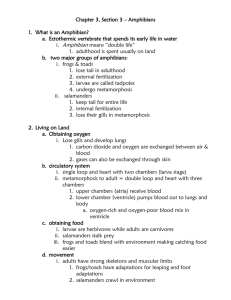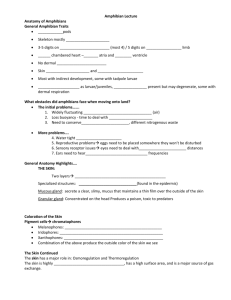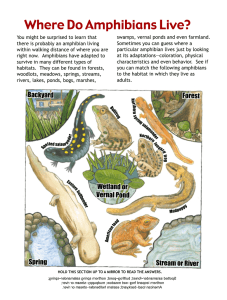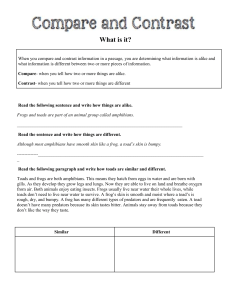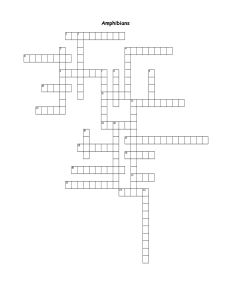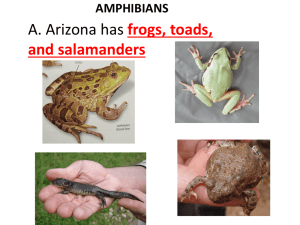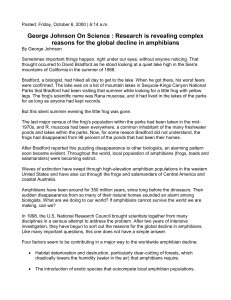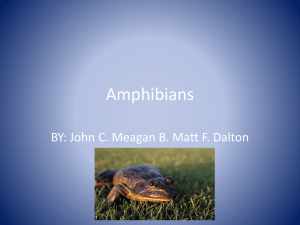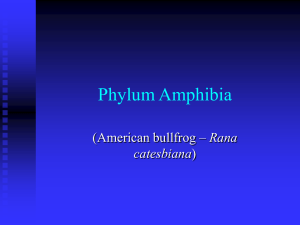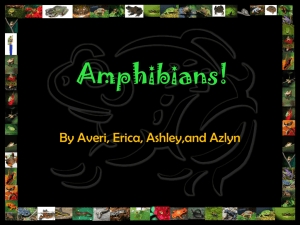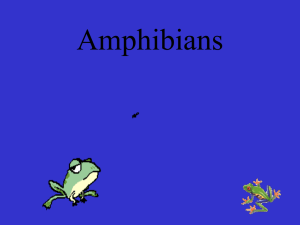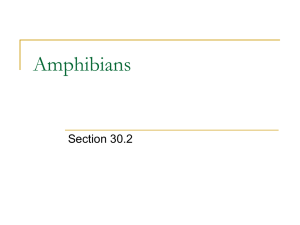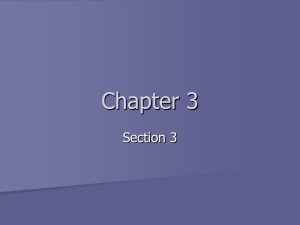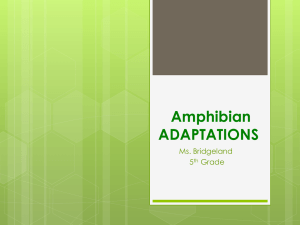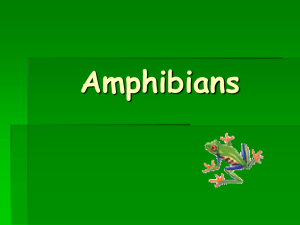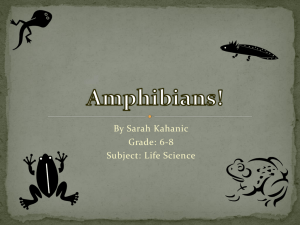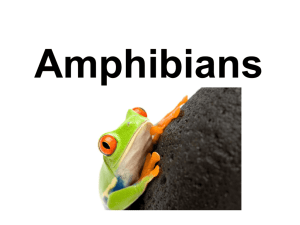Amphibians Physical examination
advertisement
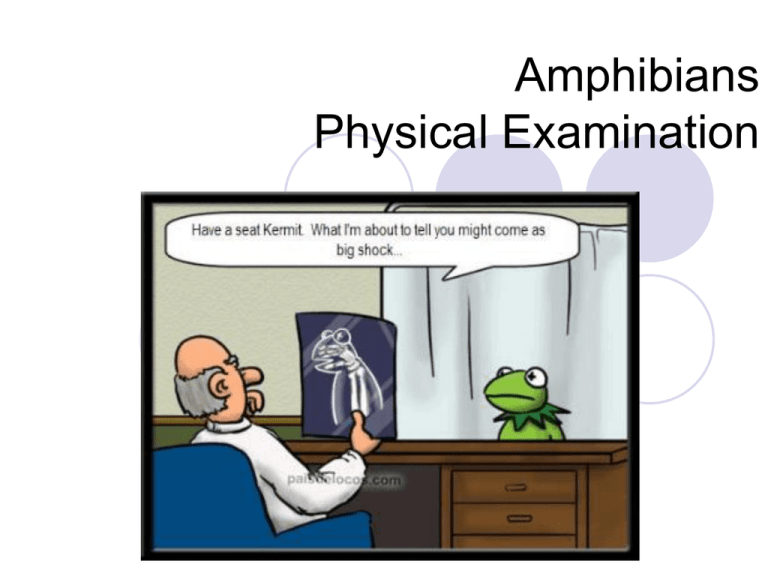
Amphibians Physical Examination Handling Concerns-Amphibian Skin Permeable Moistened, powder-free gloves should be used to protect the amphibian’s skin from trauma and the handler from secreted toxins. -nicotine -cleaning supplies Delicate Secretion Nicotine Toxicity Tadpole and hypercapnic challenge -Brain stem: ventilation -Surfacing frequency Systemic vasodilation Melanocyte Activation http://www.puregreen.com.au Handler Concerns Scratches and bites Infectious disease Toxic secretions: -Irritant -Hallucinogens -Vasoconstrictors -Neurotoxin Toxin Uses For people: -Weapon (poison dart frogs) -Pharmacology (pain killers, psychoactive) For the animal: -Defense (unpalatable, paralysis) Toxins Aposematism and mimicry Curious Dogs -Symptoms: foaming mouths, shaking, vomiting, diarrhea Derived from: -Diet -Alkaloid manufacture http://www.gilroydispatch.com Handling-PE Before handling, observe the amphibian’s body condition and color, posture, skin condition, movement and activity level, respiratory effort, and response to stimuli. A brief but thorough examination of the eyes, nares, and conjunctiva is easily made using an ophthalmoscope or slit lamp. The oral cavity, including the back of the soft palate where only a thin layer of tissue separates the buccal cavity from the eye, can be observed after opening the mouth with a thin piece of waterproof paper or plastic card. An accurate weight can be determined with minimal handling. It is essential for dosing but tends to be variable depending on hydration, feeding, and urine volume Amphibians These animals have a very delicate and sensitive epidermis and mucous covering skin. Handle only if needed and use wet hands. Picture to right is how most toads are handled Frogs However, it’s not as easy as it looks, Frogs are extremely slippery. Larger frogs may be held by the back legs if the body is supported. Handling-Restraint Caudata Goals: -Support and comfort -Netting -MS-222 -Avoid tail and gills http://aqualandpetsplus.com/Amphibian,%20Salamander.htm Handling-Restraint Anura Goals: -Support and comfort -Netting -MS-222 -Avoid kicking out African clawed toads - sharp claws, be careful www.uwm.edu/Dept/EHSRM/ACP/MANUAL/Frog2.jpg Chemical Restraint of Amphibians General anesthesia may be required to obtain a blood sample or for surgical procedures such as fracture repair or laparoscopic or exploratory surgery. Anesthesia can be achieved by using a bath of tricaine methanesulfonate (MS-222, Argent Chemical Laboratories, Redmond, WA USA). 2 g of MS-222, 40 mL of 0.5 mol/L Na2HPO4, and 2L of well-oxygenated enclosure water. This produces a 1 g/L (0.1%) solution, which is often suitable for adult aquatic amphibians. Induction of adult terrestrial species may require up to 3 g/L.5 larvae and some small adult amphibians can often be anesthetized with as little as 0.2 g/L Isoflurane/Lube/H2O Page 232 3.0 ml liquid Isoflurane 1.5 ml water 3.5 ml KY Jelly Mix everything in a 10 ml syringe and shaken The resulting liquid is then applied on the back of the patient at a dose of 0.025 ml to 0.035 ml/g of body weight Sleeping toad Venipuncture on Frogs and Toads There is a sub-Q space for injections over entire dorsal and ventral aspect. Unless animal is large enough to have visible veins, blood is collected from the heart. The sternum is pushed to one side and blood is collected with a 22-26 g needle. Never use alcohol for disinfecting the site of the venipuncture. Use diluted 2% chloroxylenol Location for venipuncture performance, read page 234-235 Abdominal vein Femoral vein Sub-Lingual vein Medication bath (TO)
